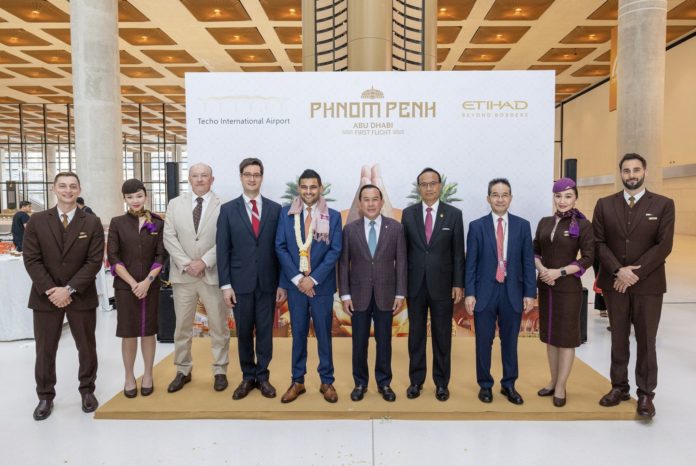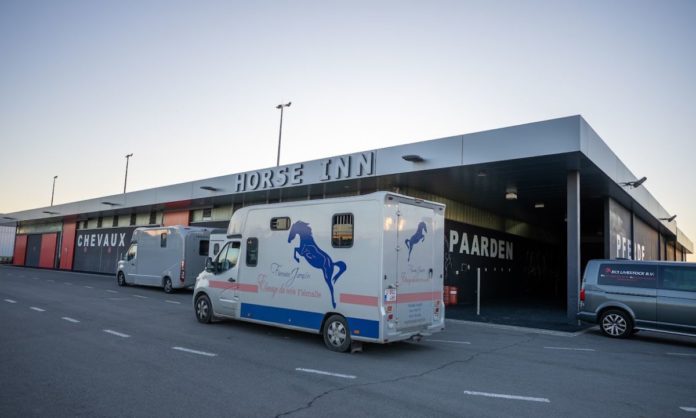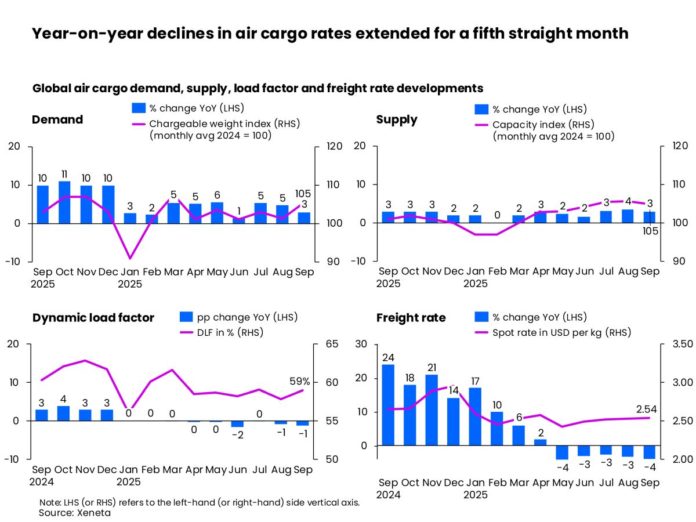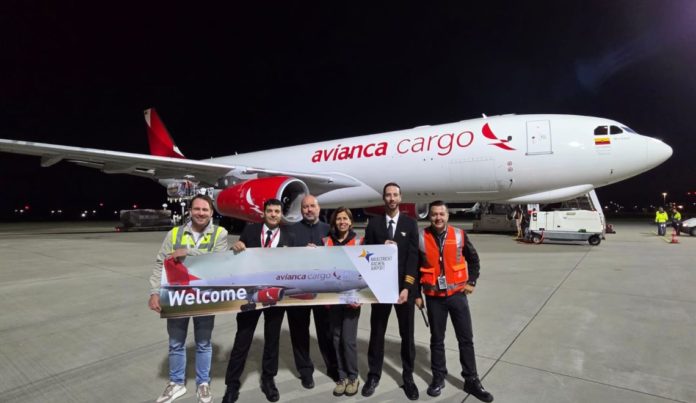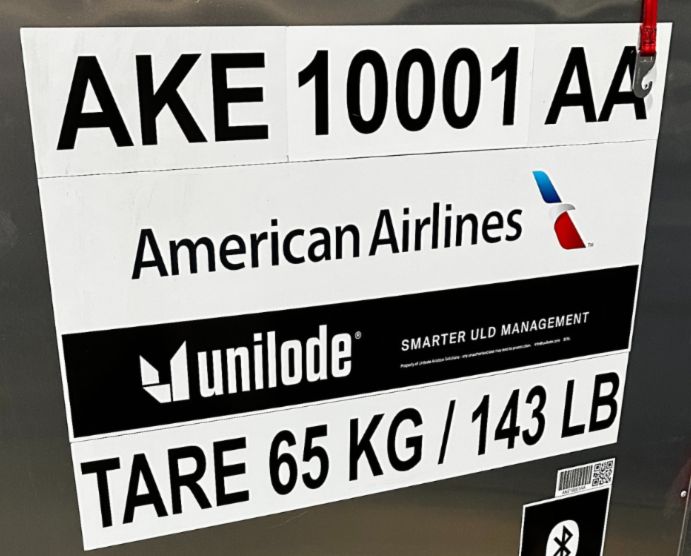The Rhenus Group has appointed Peter Nordstrom as chief executive for its Air & Ocean division in North America. In over 25 years in forwarding, he has held senior positions at Ceva Logistics, Geodis, Kuehne + Nagel, and was most recently the executive vice president of ocean freight Americas at DB Schenker.
Challenge Group renews CEIV Live Animals
Challenge Group has renewed its IATA CEIV Live Animals Certification including its Horse Inn in Liège, Belgium.
A dedicated workforce, trained to IATA standards, oversees all live animal transport, and the group has developed tailored equipment and processes such as specialist ULDs, areas for the cleaning and storage of stalls and a prototype horse trailer for transfers between the Horse Inn and the aircraft.
Each year, Challenge Group manages the movement of some 8,000 horses, with over 5,000 of these transported on its own fleet of Boeing 747 aircraft, primarily across the Atlantic. The aircraft are equipped with pre-cooling systems, and are temperature-controlled throughout the flight.
Could be worse as September airfreight slows
The global air cargo market is on course for +3-4% growth in demand in 2025 based on current trading conditions, but after unexpectedly high volumes over the summer, September’s data showed signs of growth slowing heading into the final quarter of the year, according to industry analysts Xeneta.
At what would traditionally be seen as the start of the peak season for air cargo volumes, demand growth slowed to +3% year-on-year – on a par with growth in capacity – in September following consecutive +5% year-on-year increases in July and August. Month-on-month volumes also saw a lower +3% rise.
Xeneta chief airfreight officer, Niall van de Wouw, said: “Over the previous two months we’ve seen how air cargo has gained from ‘piggybacking’ on global uncertainty, whether that’s frontloading supply chains or modal shift from ocean to air to move goods more quickly before tariffs took hold. September’s data is an early indication that this is lessening as some stability starts to return on major corridors and everything is less hectic on a global level.”
The slowdown of volume growth also continued to squeeze yields. Air cargo spot rates registered a fifth consecutive month of year-on-year declines in September, falling by -4% to a global average of US$2.54 per kg. Much of the downward pressure came from muted activity on Transatlantic and Transpacific routes, where repeated extensions of US tariff deadlines appear to have pulled forward volumes into the summer months.
The US administration’s decision to remove the de minimis threshold for low value cross-border shipments caused Chinese e-commerce exports to the US to fall for a fourth consecutive month in August. Sales of low-value and e-commerce goods slumped -38% year-on-year, according to the latest China Customs’ data.
E-commerce boost for Asia-Europe
Burgeoning e-commerce volumes, a result of the Chinese e-commerce behemoths shifting their focus towards European consumers, helped to push volumes +4% higher on the Asia–Europe corridor in the first three weeks of September compared to the previous month.
Demand was also supported by the pre–Golden Week cargo rush as well as mode shift due to the suspension of China–Europe rail links at the Polish border. China Customs reported year-to-date cross-border e-commerce and low-value goods sales to Europe increased +58% year-on-year, with August alone up +55%.
Van de Wouw says it is “astonishing” how quickly China’s big e-commerce players have been able to pivot towards Europe to boost their growth since the US’ decision on de minimis.
In terms of the latest 100% pharmaceutical tariffs imposed by the US government, effective from 1 October, the impact will likely be more measured due to earlier negotiated agreements with the EU and Japan. The UK also negotiated a trade agreement with the US, but the tariff rate for pharmaceuticals remains pending.
Moreover, the US focus on branded or patented products shields most of India’s pharma exports, which fall under low-cost generic medicines.
Even so, the overall Asia-Europe growth in September compared to August remains well below last year’s +9% surge. Super Typhoon Ragasa added to the gloom. The storm disrupted East Asian hubs in the final week of September, leaving monthly volumes up by only +3% on August.
US tariffs affect seasonal flows
At the corridor level, the US tariffs have created profound impacts on seasonal air cargo flows.
Across both the Transpacific and Transatlantic markets, the average air cargo spot rates slipped by -2-3% in September compared to a month ago. Even as supply chains shift towards the Southeast Asia market for production to lessen the impact of tariffs, September’s Southeast Asia to the US spot rates failed to grow, declining -2% month-on-month and a striking -22% compared to a year ago.
The reduction of e-commerce volumes due to US global de minimis bans left a gaping hole in the Transpacific market, marked by carriers’ agility in shifting freighter capacity away from the region.
Reflecting the general slowdown in growth, Europe to the US air cargo markets also saw lower volumes as the earlier frontloading due to extended US tariff deadlines disrupted traditional seasonal flows. On a more positive note, September air cargo spot rates on the westbound and eastbound legs remained higher than a year earlier.
A reduction in Transatlantic capacity of around 20% in late October at the start of airlines’ winter schedules, when passenger belly capacity is taken out after the summer months, is expected to reverse freight rate declines, but is, van de Wouw, says “a consequence of supply, not demand”.
Asia-to-Europe trade lanes offered a little more cheer as September spot rates from Northeast and Southeast Asia to Europe edged up by +4% month-on-month, supported by the run-up to the peak shipping season. Compared with a year ago, however, they were down -5% and -21% respectively.
Shippers and forwarders still wary
The level of rate fluctuation is creating a “wary mood” for contract negotiations between shippers and freight forwarders. The share of six-month deals rose by nearly ten percentage points year-on-year to 22% in the third quarter, timed to expire just after the peak season and ahead of the next annual cycle. By contrast, the share of contracts lasting more than a year has fallen, reflecting doubts about the longer-term outlook.
“There is such limited bandwidth for shippers. They are looking for stability at a reasonable, competitive rate, and want to go long on contract negotiations preferably, because it’s such a painful process for them trying to plan on a quarter-by-quarter basis,” van de Wouw added.
Not as bad as feared
Looking at the outlook for Q4, van de Wouw said: “When we reported better-than-expected demand in July and August, our question was ‘how long will it last?’. In September, we started to see the market growth slowing, and we expect this to continue for the rest of the year.”
Based on current market fundamentals, he now expects 2025 to end with a +3-4% growth in air cargo demand.
“Q4 for airlines and freight forwarders will likely not be as good as hoped, but 2025 overall may not be as bad as they feared. A year ago, at this time, we talked of a ‘peak season to be proud of’ and air cargo on its final approach to double-digit growth. One year down the line, the market looks very different.
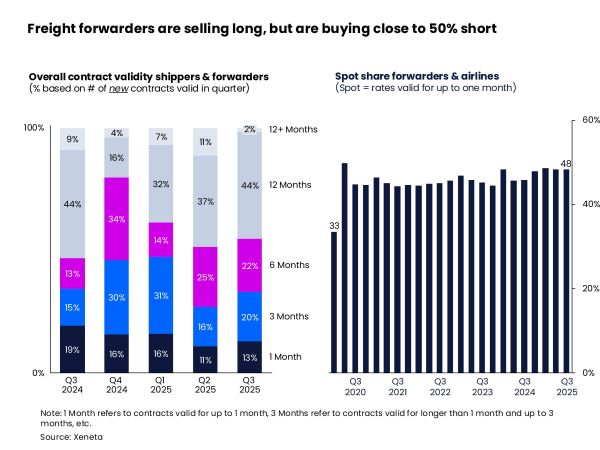
Avianca adds Maastricht flights
Maastricht Aachen Airport (MST) in the Netherlands has added two new weekly freighter flights following an agreement with Colombian airline Avianca Cargo.
From October, it will operate flights with an Airbus A330, which has a maximum payload capacity of 61 tons. Avianca will import flowers from Quito, Miami to Maastricht and Zaragoza, Spain South America and export clothing for a high-street fashion chain in Europe.
In the first eight months of 2025, Maastricht saw a 25% increase in cargo volumes compared with last year, bolstered by the expansion of operations by Turkish Cargo and Emirates SkyCargo, as well as the arrival of My Freighter and Ethiopian Cargo.
IAG adds Dublin widebody links
A new twice-weekly widebody service between Dublin and Madrid with connections to Latin America is one of the highlights of IAG Cargo’s 2025-26 winter schedule.
The business, which includes the cargo arms of British Airways, Aer Lingus and Iberia, is also reintroducing its Dublin – Miami with three weekly flights and is launching a new route between Madrid and Orlando. Dallas will have seven flights per week from London Heathrow.
IAG Cargo will also resume services between London Gatwick and Bangkok, with six weekly services and restart operations between Heathrow and Abu Dhabi, offering seven flights per week.
In addition to new and returning routes, IAG Cargo is increasing capacity on several existing services. Flights between London Heathrow and Cape Town will go up from seven to 17 per week, while Heathrow-Miami will double from seven to 14 weekly. Heathrow to Bahrain rises from three to seven flights per week.
IAG Cargo chief sales and marketing officer, Camilo Garcia Cervera, said: “The winter season is a crucial time for global trade. The introduction of a wide-body connection between Dublin and Madrid further strengthens our network, providing greater access to key transatlantic and Latin American trade lanes.”
Unilode takes on American Airlines fleet
Unilode Aviation Solutions is to manage the entire American Airlines Cargo ULD fleet, including repair, maintenance and digitalisation. The equipment firm has also created a dedicated American Airlines Cargo customer success team, based in Dallas-Fort Worth to provide 24-hour support.
Unilode has also introduced a tailored onboarding process specifically for the carrier including roadshows across the US and globally, offering hands-on training and information sessions for the American Airlines Cargo team.
German forwarder takes stake in Latin America’s OnBoard
German owner-managed forwarder Röhlig Logistics has bought a 10% stake in Latin America-based OnBoard Logistics.
The collaboration with OnBoard founder Pablo Martinez (pictured, right, with Röhlig regional chief executive, Michael Gerding) began in 2006, when he represented Röhlig with his former company Procargo as an agent in Argentina, Bolivia, Paraguay and Uruguay. In 2014, Martinez founded OnBoard Logistics, which today has over 350 employees in 15 countries.
With the minority stake in OnBoard Logistics, Röhlig will significantly improve its coverage throughout Latin America. While it already has a strong presence in Mexico, Brazil, Argentina, Bolivia, Chile and Uruguay, OnBoard offers the opportunity to gain a foothold in further emerging markets in the region.
It’s not about the boxes…
Abu Dhabi-based Etihad Cargo has launched an advertising campaign to bring home the importance of air cargo in everyday life.
In its first campaign under Etihad Airways’ new Beyond Borders platform, it celebrates the industry’s role in connecting people, communities and economies across the globe.
With striking visuals and storytelling, it humanises cargo, highlighting how fresh produce, pharmaceuticals, luxury goods or live animals are not just boxes in transit but impact daily life worldwide.
It also reflects Etihad Cargo’s focus on collaboration, with the campaign emphasising the strength of its partnerships in ensuring resilient supply chains and timely solutions that transcend borders.
Chief cargo officer, Stanislas Brun, says: “Every shipment tells a story. It’s never just an address. It represents trust, care and a connection that makes a real difference in people’s lives. Freight is more than the movement of goods – it is a vital force linking families, sustaining businesses, and keeping global supply chains moving.”
Alongside the campaign, Etihad Cargo will be launching its refreshed website etihadcargo.com on 9 October. It offers a cleaner interface and enhanced features, including simplified booking and tracking tools and the ability to monitor claims in real time.
Arvato to serve US server market
German logistics company Arvato has entered the US data center logistics market with the start of operations in Des Moines, Iowa. It marks the first of several planned sites, with locations in Atlanta, Milwaukee, and Dulles already planned.
In Des Moines, Arvato has launched operations for one of its largest clients, offering services ranging from warehousing and white-glove last-mile delivery to cabling, staging, and high-precision equipment handling. Among the latest innovations is the deployment of liquid-cooled server racks – a high performance solution for thermal management in modern data centers – which has not yet been introduced in Europe.
The US entry is the latest step in the integration of Irish-based ATC earlier this year.
Arvato tech president, Mitat Aydindag, said: “The US is the world’s most important market for data centers and a natural next step for our expansion. With many of the hyperscalers [large Cloud services companies] heavily invested, we are now able to offer our services seamlessly across both sides of the Atlantic – delivering integrated solutions with consistent standards, wherever our clients operate.”
Team members from Arvato hubs in Frankfurt, London, and Dublin contributed to the ramp-up and training efforts in the US ensuring service quality and safety standards are aligned with international benchmarks.








